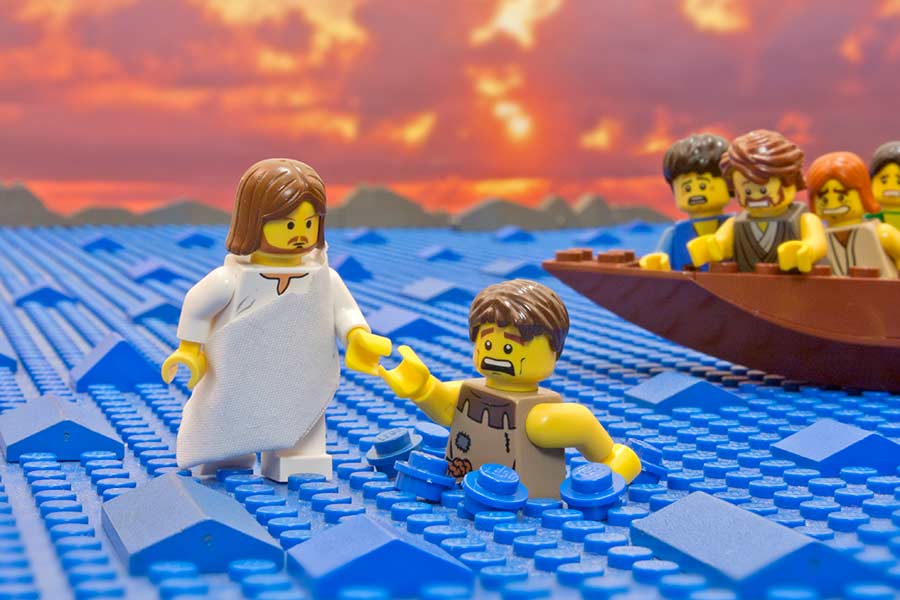The number of Mormons living in poverty alarmed the non-Mormon residents of Kirtland, Ohio, and additional throngs of poor recent converts were arriving in the city every month. With the Church substantially in debt, Joseph Smith acknowledged the "appalling scene" and took action, calling on other branches of the Church to stop sending penniless families to Kirtland.
In July of 1836, Church member William Burgess claimed to the prophet to be the only living man who knew the location of a large sum of money hidden in the basement of a house in Salem, Massachusetts. So Joseph Smith and Sidney Rigdon traveled 600 miles to Salem to search for the hidden money with Burgess. When the search was fruitless, Burgess quickly gave up and left, while Smith and Rigdon continued the search a while longer before giving up.
After Smith returned to Kirtland, Church leaders pursued the idea of establishing their own bank. When the state of Ohio refused to grant them a charter, the Church moved forward with the establishment of an unchartered, unauthorized entity they named the Kirtland Safety Society Anti-Banking Company. Joseph Smith was named as its treasurer and Sidney Rigdon its secretary.
They printed their own money and opened for business in January 1837, but quickly ran into trouble. Kirtland's Messenger and Advocate newspaper reported that some unscrupulous members of the Church were defrauding newcomers to the area by talking them into unusual investment opportunities, then taking their money and deserting them. In May, a run on the bank forced the Safety Society to stop paying out hard currency to its customers.
Other banks refused to recognize the Safety Society's notes, rendering them worthless. 200 people lost everything they had invested, as the Society accumulated $100,000 in debt. Amid rumors of embezzlement, Smith's efforts to persuade more investors to keep the bank afloat failed. Seventeen lawsuits were filed against the prophet, and Smith and Rigdon were charged with violation of Ohio banking laws.
The Church elders gathered in the temple and those who believed Joseph Smith to be a fallen prophet suggested David Whitmer should become the new leader of the Church. Outraged, Brigham Young later described his reaction to their disloyalty in these words: "Joseph was a Prophet, and I knew it, and that they might rail and slander him as much as they pleased; they could not destroy the appointment of the Prophet of God, they could only destroy their own authority, cut the thread that bound them to the Prophet and to God, and sink themselves to hell."
But disparagement of the prophet became widespread that summer, with a great number of Saints blaming Smith for all their problems. Many, like Warren Parish, who had acted as the prophet's scribe and had faithfully served as a missionary, now questioned whether Smith could still be inspired by God. Once-loyal Saints abandoned the prophet, despite stalwarts like Brigham Young warning them to repent so as to avoid a divine punishment like that which destroyed the Nephites.
In August, while Smith and some of his supporters were away on missions, Warren Parrish and one of the Twelve Apostles named John Boynton led a group of men brandishing pistols and knives in an armed takeover of the Kirtland Temple. Amid panic and terror, Church members jumped out the building's windows to escape. Finally, police arrived and ejected the men.
A Church conference in September resolved to send Smith and Rigdon to Missouri to choose a location for a new more permanent settlement for the Saints who had fled from Zion in 1833. Recently elected Governor Lilburn Boggs had signed a bill creating a new county in the northern part of the state known as Far West, where it was thought the best solution to the "Mormon problem" would be to segregate them from the rest of the population.
But once again in the prophet's absence, trouble flared up in Kirtland in November where Parish, Boynton, and thirty other leading citizens sought to overthrow the Church and take control of the temple. Now calling themselves the Church of Christ, they styled themselves reformers, and rejected the authority of Joseph Smith and the Book of Mormon. Over the next six months, they received the support of between 10 and 15 percent of the Saints in Kirtland.
Smith returned to Kirtland that winter, but the toxic atmosphere of apostasy made it too dangerous for him to remain there. His staunchest supporter Brigham Young had already received death threats, and now one apostate who was still sympathetic to the prophet came forward to warn him of an impending assassination plot. That night Smith and Young fled Kirtland with their families, and headed back to Missouri. It was a particularly difficult journey for Smith's wife Emma who was six months pregnant.
Over the next several months a majority of the Saints in Kirtland sold their property, purchased wagons, packed up their belongings, and headed off to follow the prophet to Far West, Missouri. In doing so, these faithful families left behind the homes and businesses they'd established and abandoned their beloved temple they had sacrificed so much to build.
Accidents and illness added to their suffering during the journey west. Some were crushed beneath wagon wheels, others became sick from a meager diet and polluted water. Throughout the journey, the elders ministered to the sick and the injured, and many were instantly healed through the power of the priesthood. But others succumbed to disease and died.
NEXT:
Also from the creator of The Brick Book of Mormon:

